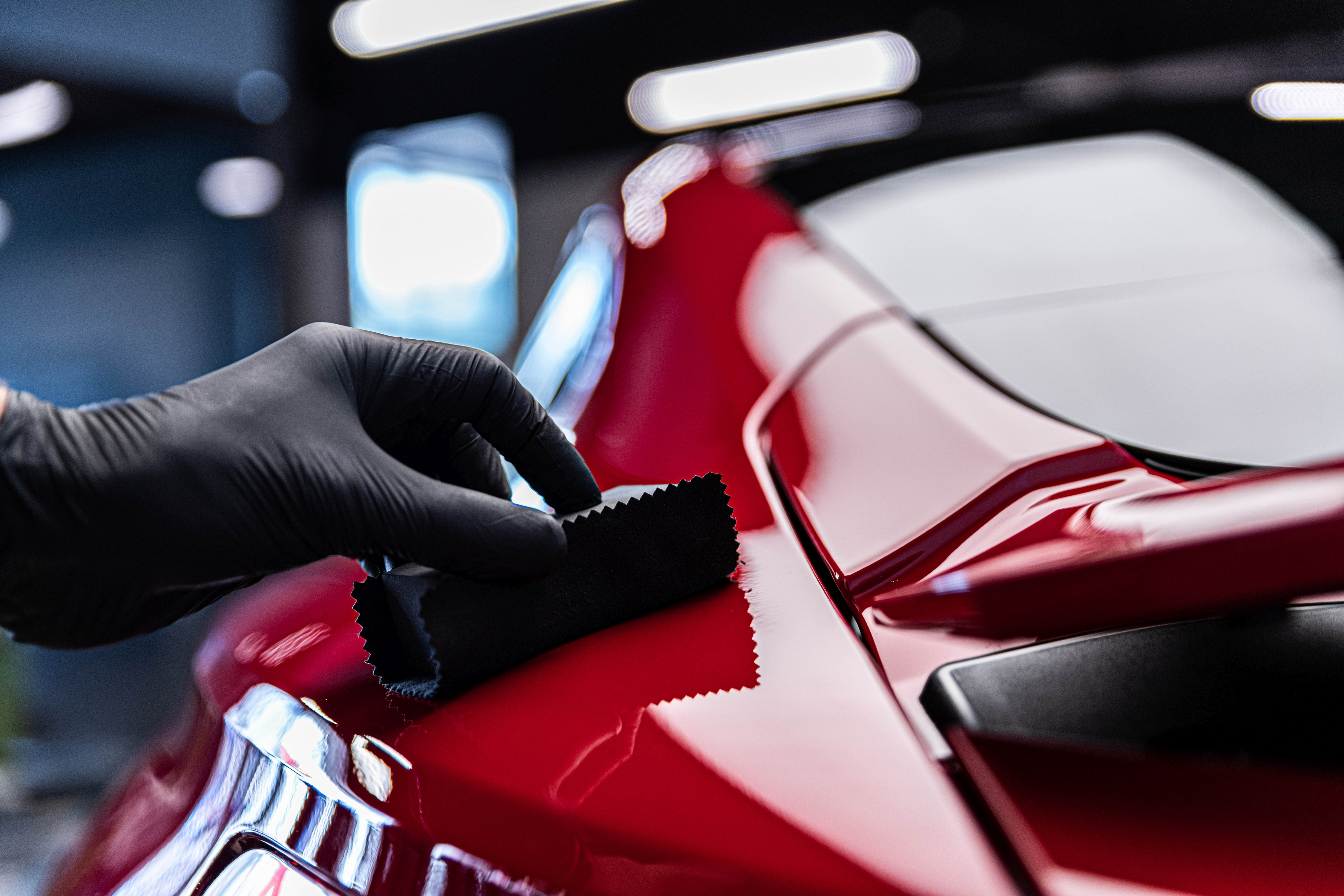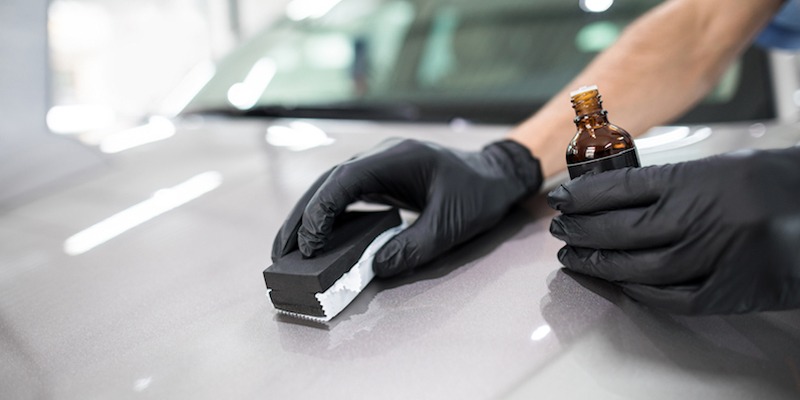The Value of Ceramic Coating: Safeguarding Your Cars and truck's Exterior With Precision
In an age where maintaining the functional and aesthetic honesty of your automobile is extremely important, ceramic finishing becomes a pivotal remedy. This safety layer not just guards against environmental misfortunes however also boosts the aesthetic allure of your auto. With its one-of-a-kind bonding residential properties, ceramic finishing provides a level of security that much surpasses typical waxing methods. Exactly how specifically does it accomplish such impressive results? As we check out the nuances of its application and contrast it to various other choices, one can not wonder yet aid regarding the specifics that make this innovation crucial for modern car care.
Advantages of Ceramic Coating
When it comes to maintaining an automobile's aesthetic charm, ceramic coating offers significant advantages. By creating a semi-permanent bond with the lorry's paint, ceramic finishes successfully prevent oxidation and fading, making sure that the auto maintains a shiny, showroom-like coating for an extensive period.
Along with its safety top qualities, ceramic covering provides impressive hydrophobic properties, causing water and other liquids to grain off easily. This function streamlines the cleaning process, as dirt and particles are much less most likely to stick to the surface, decreasing the frequency and effort needed for upkeep. Moreover, the finishing's resistance to chemical discolorations from acidic impurities like bird droppings and tree sap is another significant benefit, lessening potential paint damages.
Ceramic coverings additionally enhance scratch resistance, providing a layer that can absorb small abrasions and swirl marks. This quality is especially valuable in preserving an immaculate surface area, reducing the likelihood of noticeable blemishes and protecting the integrity of the car's paintwork in time.

How Ceramic Finish Functions
Understanding the mechanics behind ceramic finishing exposes its efficiency as a safety option for cars. Ceramic coatings are basically fluid polymer applications that chemically bond with a vehicle's factory paint, creating a safety layer. This layer works as an obstacle versus ecological impurities such as dust, gunk, and ultraviolet rays, which can deteriorate a cars and truck's outside gradually. The key part in ceramic layer is silicon dioxide (SiO2), which stems from quartz crystals and is recognized for its phenomenal solidity and longevity.
Application of ceramic coating involves a thorough procedure. At first, the vehicle's surface area need to be completely cleaned up and decontaminated to make certain ideal adhesion. As soon as used, the fluid polymer develops a semi-permanent bond with the paint, setting into a transparent, durable guard. This guard improves the automobile's gloss and hydrophobic buildings, promoting less complicated cleansing by triggering water and impurities to grain and slide off effortlessly.
Moreover, the finishing's molecular structure provides resistance to small scratches and chemical spots. Unlike waxes or sealants that rest on top of the paint, ceramic coverings integrate with the surface area, offering resilient security. This integration is fundamental to its performance, making sure the car's surface remains beautiful for several years.
Contrasting Ceramic Coating to Alternatives
In the world of vehicle security, ceramic browse this site coating stands as an awesome alternative when compared to typical choices such as waxes and sealants. While waxes offer a short-term lustrous coating, normally lasting just a few weeks to months, ceramic coatings supply a longer-lasting remedy, often sustaining for several years. This durability is credited to the chemical bonding that occurs when ceramic coverings are applied, creating a strong layer that is immune to environmental risks.
Contrastingly, sealants, although even more resistant than waxes, still drop short of the robust defense provided by ceramic layers. Sealers can generally last for up to a year, supplying an artificial shield against certain components. They lack the superior hydrophobic properties and UV security that ceramic coatings deliver.
Furthermore, ceramic coverings supply improved scratch resistance, which neither waxes nor sealants can successfully match (ceramic coating). This is especially useful in preserving a car's pristine look. In addition, ceramic coverings streamline upkeep initiatives by reducing the adherence of dust and grime, therefore facilitating less complicated cleaning. In recap, while traditional waxes and sealers provide standard defense, ceramic finishings provide a comprehensive, lasting service that considerably protects the vehicle and boosts's exterior surface.
Application Refine Explained
Using ceramic coating to an automobile requires a meticulous process to make certain optimal results and resilience. The first action includes extensively cleaning up the automobile's surface area to eliminate dirt, oil, and previous waxes. This is crucial for ensuring the layer adheres effectively. A pH-neutral shampoo and a read the full info here clay bar therapy are typically used to achieve an excellent surface area. As soon as cleaned, the lorry is dried and polished to remove any type of flaws, as any kind of existing swirls or scrapes can end up being much more noticable after the finish is used.
Following surface area preparation, the application of the ceramic finishing starts. Using an applicator pad, the ceramic finish is applied in tiny areas to guarantee even insurance coverage.
After application, the finish needs a particular healing period, during which the lorry ought to be safeguarded from water and contaminants. This curing procedure can differ depending upon the product but generally varies from 24 to 2 days. Ultimately, this in-depth process is critical in accomplishing a durable and why not try here shiny coating.
Maintenance Tips for Long Life
To maintain the durability of a ceramic layer, adherence to a disciplined maintenance regimen is crucial. Avoid automatic automobile washes, as their extreme brushes can jeopardize the layer's integrity.
Post-wash, drying the vehicle with a tidy microfiber towel stops water places that may degrade the coating with time. Furthermore, apply a ceramic layer booster every couple of months. These boosters enhance the hydrophobic residential properties and boost the covering's protective abilities, ensuring it stays effective versus contaminants.
Remember that car park locations play a vital role in upkeep. ceramic coating. Whenever feasible, park in shaded areas to decrease UV exposure, which can progressively weaken the layer. For lasting storage space, think about making use of an auto cover for included defense against environmental aspects
Final Thought
In verdict, ceramic coating works as an essential protective layer for automobile exteriors, offering long-lasting protection versus environmental variables such as uv, dirt, and crud rays. By developing a semi-permanent bond with the paint, it boosts visual appeal while preserving the automobile's value. Its hydrophobic residential or commercial properties help with easier upkeep, identifying it from different protective methods. Comprehending the application process and adhering to upkeep recommendations are essential for maximizing the durability and effectiveness of ceramic finishing.
When it comes to maintaining an automobile's aesthetic charm, ceramic layer offers considerable advantages. By creating a semi-permanent bond with the car's paint, ceramic coatings efficiently prevent oxidation and fading, making sure that the cars and truck preserves a glossy, showroom-like coating for a prolonged duration. Ceramic coverings are basically liquid polymer applications that chemically bond with an auto's manufacturing facility paint, producing a safety layer. In recap, while traditional waxes and sealants provide fundamental defense, ceramic layers provide a thorough, long-term remedy that significantly maintains the car and improves's exterior coating.
